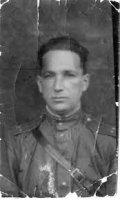 On October 14, 1943, an uprising broke out in the Sobibor concentration camp in southeastern Poland near Lublin. Sobibor was one of the death camps that served the Nazi ideology to murder Jews, Soviet war prisoners and Roma.
On October 14, 1943, an uprising broke out in the Sobibor concentration camp in southeastern Poland near Lublin. Sobibor was one of the death camps that served the Nazi ideology to murder Jews, Soviet war prisoners and Roma.The uprising was stirred up by prisoners who were part of a secret group in the camp. It was led first by a Polish Jew, Leon Felhendler, and later by a Soviet army lieutenant, Alexander Pechersky. According to some sources, up to 600 prisoners took part in the uprising. About 80 of them died after being hit by the electric fence, and half of the prisoners on the run were murdered by SS forces within a few weeks. The rest managed to hide in the surrounding area or escape far from the camp. From the available data, it is believed that 50 of them survived the war. Among them was Lieutenant Alexander Pechersky himself, who fought his way with his group to Belarus, fought as a partisan and was also in the ranks of the Red Army. In his notes, he recalls the atrocities committed by the Nazis in Sobibor. He died in his native Rostov-on-Don in 19
 90.
90.Even the Jews from Slovakia did not escape a terrible fate. As many as 70,000 people of Slovak nationality were taken to concentration camps, most of whom perished in these places. The first racial laws were adopted in Slovakia in April 1939, and in 1941 labour camps began to be established. One of them was the camp in Sered (60 km from Bratislava). It served as a platform for the transport of Jews from Slovakia to Sobibor. In 2016, the Holocaust Museum was inaugurated in the original place of the camp in Sereď. According to the museum director, as many as 25,000 Slovaks were deported to Sobibor between 1942 and 1945.
The history of the Sobibor uprising is documented in films such as Escape from Sobibor (1987) and Sobibor (2016). Historians from the Slovak Academy of Sciences Hlavinka and Salner also describe the stories of Sobibor in their book Sobibor Death Camp History and Legacy.
by Katarína Štoková


